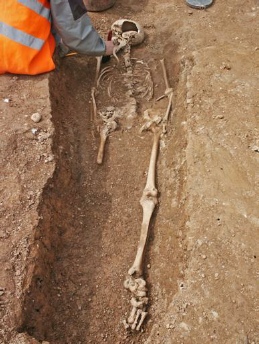


Menu

Search the PDAS site


Notice
Board

Recent Excavations in Plymouth
Dr John Salvatore
Recent excavations in Plymouth have centred upon Sutton Harbour, particularly the area to the east of Sutton Pool. In advance of construction for a major building at the Boat Yard site, Exeter Archaeology have uncovered the remains of buildings fronting the former quay wall. The area was reclaimed in the 17th century and this was followed by the erection of quays and warehouses.
The most significant building known from cartographic sources was the 17th century stone-
Exotic imported pottery of the 17th century has also been recovered and the whole excavation is reminiscent of the Woolster Street excavation of the 1970s where quay-


Sugar House under excavation by Exeter Archaeology


Burial of amputee
Excavation by Exeter Archaeology
Another major excavation, also by Exeter Archaeology, has been undertaken at the former Crescent Car Showroom site on Notte Street in advance of office development. This excavation may prove to be one of the most significant in Plymouth for a number of years. Initial recognition by the Historic Environment
Officer of some human bone uncovered during the demolition of the garage was swiftly followed by a full scale excavation. This recovered some 160 burials in individual and multiple graves and a considerable quantity of disarticulated bone. Cartographic evidence has shown the site to be that of a former Royal Naval hospital cemetery which was in use both before and following the construction of the Royal Naval Hospital at Stonehouse in 1758.
| January |
| February |
| March |
| April |
| May |
| June |
| July |
| August |
| Septmber |
| October |
| November |
| December |
| Pollen Analysis |
| Archaeology of Gardens |
| Identifying Prehistoric Pottery |